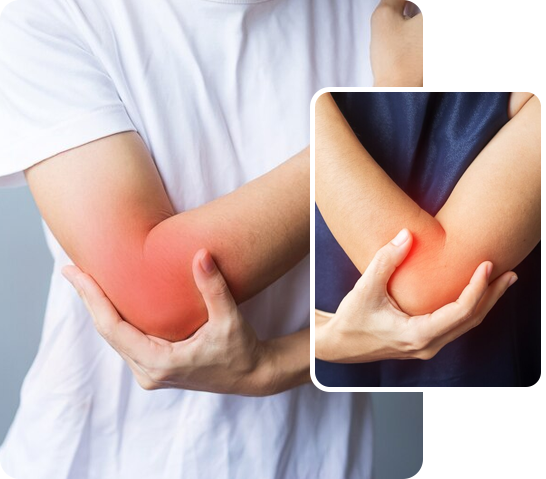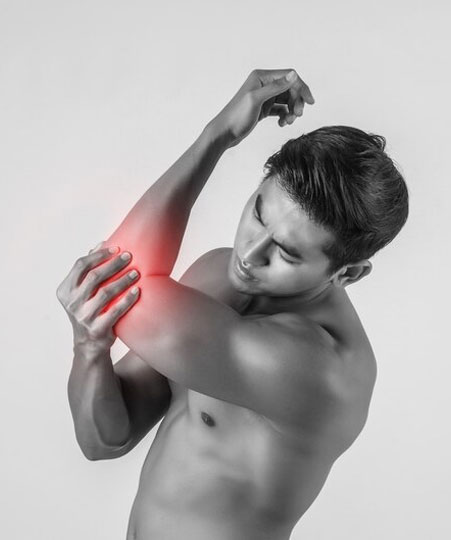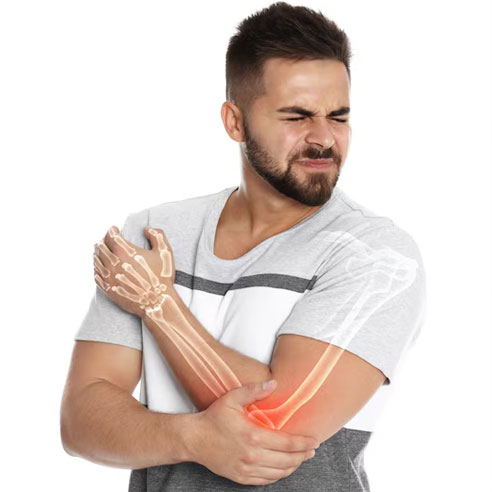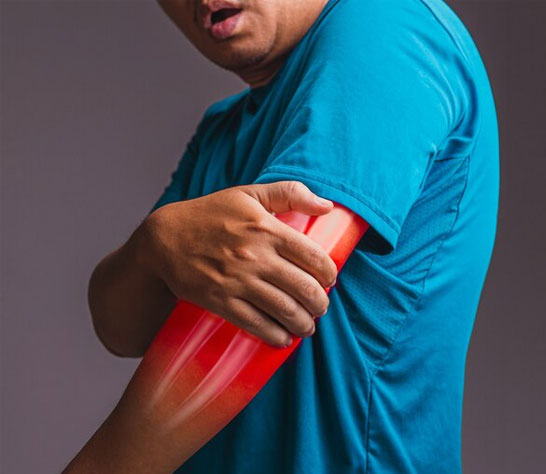Comprehensive Assessment
Osteopaths begin by conducting a thorough and detailed assessment to identify underlying issues in the elbow, neck, and shoulder areas.
Golfer’s Elbow is a painful condition caused by overuse of forearm muscles, leading to tendon inflammation near the inner elbow. This condition is not limited to golfers; it can affect anyone engaging in repetitive wrist or hand movements, including desk workers. Symptoms may include pain, stiffness, and reduced grip strength, impacting daily activities. Osteopathic treatment focuses on addressing the root cause by improving muscle balance, enhancing joint mobility, and relieving tension in connected areas like the shoulder and wrist. With personalized care and techniques that promote healing, osteopaths provide long-term relief and help prevent recurrence, restoring comfort and function effectively.

Repeated movements like gripping, twisting, or swinging can strain the tendons, causing inflammation in the elbow.
Constant wrist or forearm motions, such as typing or lifting, lead to micro-tears and irritation in elbow tendons.
Weak or tight muscles in the forearm can place excessive stress on the elbow joint, contributing to persistent pain.
Poor posture, especially in desk workers, can misalign the body, placing added strain and stress on elbow tendons.

Osteopaths begin by conducting a thorough and detailed assessment to identify underlying issues in the elbow, neck, and shoulder areas.
Osteopathic manipulation is applied to the elbow, wrist, and surrounding areas to restore balance, alleviate pain, and improve mobility.
Therapeutic techniques such as myofascial release help reduce muscle tightness, improve circulation, and promote faster healing and recovery.
Osteopaths recommend targeted exercises to strengthen and stretch the forearm muscles, ensuring long-term recovery and prevention of further injuries.
Golfer’s Elbow, or medial epicondylitis, is an overuse injury that causes pain and inflammation on the inner side of the elbow. It occurs when the tendons that connect the forearm muscles to the elbow become strained or torn due to repetitive movements. Although commonly associated with golfers, this condition can affect anyone who performs repetitive wrist and arm motions, including desk workers, athletes, or manual laborers. Symptoms include pain, tenderness, and stiffness in the elbow, and it can extend down the forearm. Treatment typically involves rest, stretching, strengthening exercises, and osteopathic techniques to relieve pain and promote healing for long-term relief.

Osteopathic care helps alleviate pain by using hands-on techniques that target underlying causes, ensuring long-term relief.
Osteopaths focus on restoring joint and muscle function, enhancing mobility and flexibility for better overall movement.
By treating the body as a whole, osteopathic care balances systems and promotes natural healing effectively.
Osteopaths help prevent injuries by correcting misalignments and improving posture, reducing future risks of pain or strain.
Experience lasting relief with tailored treatments and advanced therapies, designed to heal and restore elbow function.
Preventing golfer’s elbow requires a combination of proper technique, regular stretching, and strength-building exercises. Ensuring that the muscles around the elbow are strong and flexible can reduce the strain on tendons. In addition to strengthening exercises, incorporating rest periods and modifying repetitive movements can prevent further injury. Osteopathic care can be a key element in injury prevention, as osteopaths focus on improving alignment, posture, and joint mobility. By addressing underlying causes such as wrist, shoulder, and neck imbalances, you can avoid unnecessary stress on the elbow. Routine check-ups and preventive care are essential for long-term elbow health.

Golfer’s elbow is caused by repetitive motion or overuse of the forearm muscles, leading to tendon inflammation.
Osteopathy treats golfer’s elbow by improving alignment, addressing muscle imbalances, and promoting healing through manual techniques.
It’s important to avoid activities that strain the elbow. However, targeted rehabilitation exercises can promote recovery.
Recovery time varies, but with appropriate treatment and rest, many individuals experience significant improvement within 4-6 weeks.
© All Rights Reserved by Kriston Healthcare